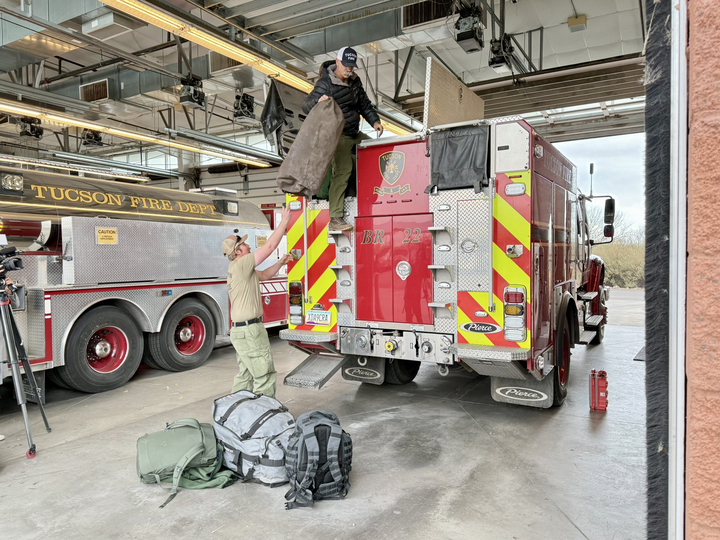The UA appointed three new regents’ professors, who were approved by the Arizona Board of Regents, during the April 8 meeting at the UA. Their appointments will go into effect in July.
Regents’ professors are faculty members who have “exceptional achievements that have brought them national or international distinction,” according to the board’s policy.
Criteria for the title can include expectations such as “sustained and continuing” professional accomplishments, demonstrated national recognition in their respective fields and “high-quality” contributions to teaching.
The process for achieving this status begins with a nomination from a group of three to five tenured faculty members, according to the UA regents’ professor nomination policy.
The professors may be placed in the pool of candidates for as long as three years after their nominations. The Regents’ Professor Advisory Committee reviews all the nominees and gives recommendations to UA President Ann Weaver Hart, who then submits her selections to the board for approval.
Once appointed as regents’ professors, they may provide services to other Arizona universities such as lecturing, researching and curriculum consultation, according to board of regents policy.
The UA appointed Renu Malhotra, Ronald Breiger and Frank Gohlke as regents’ professors this year.
Renu Malhotra
Malhotra, planetary sciences professor and Louise Foucar Marshall science research professor, has worked at the UA since 2000.
She researches planetary dynamics, a field of study that looks at the orbits of planets and how they change over time, how planets form and the overall properties of planetary systems. Malhotra said she loves doing research because there is always something new.
“One always works at the edge [of] what one knows, so it’s always something new going on with research,” Malhotra said. “It’s always exciting and I have to stay on my toes and work really hard to solve the questions that are always at the edge of our knowledge.”
Malhotra said having an entire department devoted to planetary sciences alone is fairly unique, even nationally. Most schools have planetary sciences as part of their earth sciences or astronomy departments.
“The UA having a … stand-alone planetary science department is really something special,” she said. “It has created this critical mass of planetary scientists that’s really a very stimulating group of people, a very stimulating environment to do planetary science and I think the UA is really special for that reason.”
Malhotra said she’s honored to be appointed as a regents’ professor.
“I’m really grateful and I just feel really honored,” she said. “I hope to keep doing the things that I love doing. I hope the students who are interested in this field will take greater interest in my field.”
Ronald Breiger
Breiger has been a sociology professor at the UA since 2000. He also has a courtesy appointment in the School of Government and Public Policy.
He is currently involved in a project working to find new insights in social data analysis. Breiger considers both research and teaching to be the most important part of his work at the UA.
“I really believe it’s impossible to separate the research and the teaching,” Breiger said. “My research informs my undergraduate teaching and I often get ideas in one area that I test out in the other. I might get an idea while teaching a class that could wind up being a paper, possibly a paper co-authored by a graduate student, or I might use my courses to explore ideas that arise in my research.”
He is interested in looking at the intersection of networks and culture.
Breiger doesn’t expect his job duties to change as a regents’ professor.
“I’m very honored to be selected as a regents’ professor,” Breiger said. “It’s a great highlight of my professional career.”
Frank Gohlke

Art professor Frank Gohlke has been working at the UA in the photography division in the UA School of Art since 2007. He teaches both undergraduate and graduate courses, with some courses being more technical and others more conceptual.
Gohlke works on the thesis committee for students seeking master of fine arts degrees. Graduate students choose a group of professors to work with them throughout the last year and a half of their graduate careers.
Gohlke said he considers his art to be his research as a professor at a tier-1 research university.
“It’s an important part of our credibility with the students that we’re doing the thing that we’re [trying] to help students discover how to do on their own,” he said. “Being a working artist kind of comes with the job.”
One of Gohlke’s main focuses is his work producing a book from an eight-month trip to Kazakhstan in 2013 and 2014, where he photographed the last surviving wild apple forests.
“It was pretty cool,” Gohlke said. “I have thousands and thousands of pictures, and I’ve been slowly trying to absorb how those pictures should be edited and how they should be put together in a larger work.”
His favorite part of working at the UA is the students.
“I think that’s one of the best things about teaching art at this level is that people generally do not need to be motivated,” he said. “They’re motivated by their love of what they do, just like their professors are motivated by their love of what they do, and their joy in passing that gift along to the degree that they can. So I think, in some ways, I can’t imagine a better job.”
Follow Ava Garcia on Twitter










